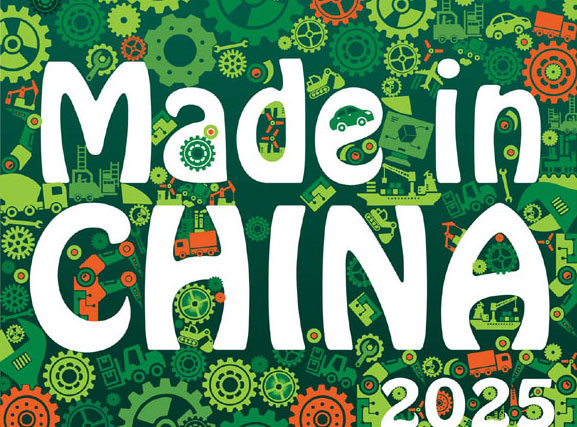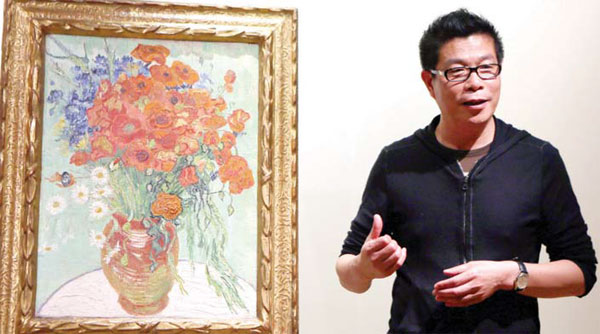State of the art
Updated: 2015-09-25 07:59
By Riazat Butt(China Daily Europe)
|
|||||||||||
|
Wang Zhongjun, chairman and cofounder of entertainment giant Huayi Brothers Media Group, paid $61.8 million last year for a Van Gogh, Still Life, Vase with Daisies and Poppies. |
Chinese buyers increased their spending on global art by 47 percent in the first half of this year, she says. Figures from Sotheby's in July show that Chinese buyers spent 51 percent more during its summer sales in London and that there has been a 35 percent increase in buyers from China.
Asian buyers accounted for three of the top five works sold at Sotheby's New York Impressionist and Modern Art Evening Sale in May and 30 percent of that evening's sales. One of the bidders was an Asian man who spoke Chinese, but denied being Chinese. He stood out for wearing a hooded top, sneakers and denim while bidding on a Van Gogh. He bought the painting on behalf of an unknown person for $66.3 million.
"China is an important consumer of art," says Colin Sheaf, chairman of Bonhams UK board and chairman of Bonhams Asia. "At the moment the focus is very much on Chinese art, though I think we can expect to see some diversification as some collectors - especially of modern and contemporary art - broaden the scope of their interests to include works by some of the Western contemporary masters. Even if middle-range buyers in China become less active for a while, Bonhams has clients around the world who we are confident will continue to bid."
A report in July from Artnet says the market for Chinese fine art, not including foreign art, contracted by 30 percent. Sales in the Chinese mainland and Hong Kong, for the first half of this year, amounted to $1.5 billion. For the first half of last year, sales were $2.2 billion. This could be linked to a slowdown in China's gifting culture, experts say.
Giving art as gifts, known in China as elegant bribery, has been part of the domestic art market for decades, but it has declined due to the government's anti-corruption campaign. As a side note, Artnet also reported lower sales in other important art markets: France, Germany and the United Kingdom. Only the United States experienced a significant increase.
The European Fine Art Fair Foundation, in its annual market report, says art buyers globally spent $54 billion last year, 7 percent more than in 2013. The figure, as well as setting a record, exceeds the pre-recession high of 2007. Credit Suisse, in analysis published in August, says the growth in global wealth fuels the art market and that there is a link between art prices and emerging wealth.
In 2003, sales at Christie's Hong Kong were $98 million. By 2011, they had reached $836 million, say Dan Scott and Marc Hafliger, investment strategists at Credit Suisse and authors of the report.
"We really see China as an emerging market," says Christie's Cai, who, like other industry experts, believes the Chinese art market is a work in progress. "China has a long history of art creation and art collection. It is part of world civilization. The Chinese art market only really started in the 1990s. The first Chinese auction house was only founded in 1994. That was the starting point.
"Twenty-something years ago, most people were showing up in sale rooms. At that time the Chinese market was just starting, but it is now the second-largest in the world. It has 24 percent of the market share. It is a rising giant, and the future will see continued growth."
As well as being a young art market compared with more established ones in the United States and the Europe, China also presents a chance to innovate and experiment. "The China market is more willing to experience new things in terms of collectors and artists," Cai says.
Today's Top News
Saudi king orders probe as death toll set to rise
China willing to cooperate with US on cybersecurity
New economy drives growth
Hundreds killed in Saudi Hajj stampede
Volkswagen to pick Porsche boss as new CEO
EU leaders claim unity regained, pledge aid for Syrians
Business leaders, experts applaud Xi's speech in Seattle
Premier encourages innovation
Hot Topics
Lunar probe , China growth forecasts, Emission rules get tougher, China seen through 'colored lens', International board,
Editor's Picks

|

|

|

|

|

|







